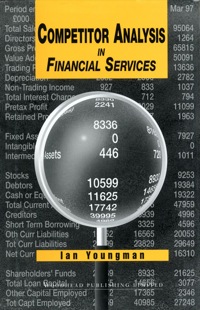Question
Yoda Muba has finally decided to manage his investment portfolio himself and is considering the company Sativi to possibly invest in it. The company publishes
Yoda Muba has finally decided to manage his investment portfolio himself and is considering the company Sativi to possibly invest in it. The company publishes its financial statements on its website, and Yoda decides to analyze certain elements before deciding whether to invest in it or not.
- You must demonstrate all the details of your calculations.
Work to do:
a) Using the balance sheet (appendix A) and the income statement (appendix B) for the years 2016 and 2017, establish the financial statements as a percentage of the company Sativi:
- Balance sheet as a percentage (%) of total assets and comment on it (maximum 50 words)
- Statement of earnings as a percentage (%) of sales and comment on it (maximum 50 words)
b) Calculate the various ratios listed in appendix C for the years 2016 and 2017. Perform the financial analysis by the ratios, indicating the strengths and weaknesses of the Sativi company (do your analysis in the order around the following ratios: liquidity, management, indebtedness and profitability).
c) Do the financial analysis using the DuPont system for the ROE only of the company Sativi by making a comparison over time (2016-2017) and a comparison with the sector. Comment on your results, highlighting the trends observed on this profitability indicator, ROE. Do you think Yoda should invest in this company? Why?
appendix A
| Sativi balance sheet (in thousands of dollars) as of December 31 | ||
| 2016 | 2017 | |
| Cash | 18,460$ | 7,150$ |
| Accounts | 38,990$ | 42,024$ |
| Inventory | 54,109$ | 106,891$ |
| Total current assets | 111,559$ | 156,065$ |
| Net fixed assets | 105,284$ | 138,151$ |
| Total assets | 216,843$ | 294,216$ |
| Accounts payable | 34,948$ | 35,746$ |
| Notes payable (bank) | 31,993$ | 36,415$ |
| Total current liabilities | 66,941$ | 72,161$ |
| Long-term debt | 96,590$ | 165,700$ |
| Total liabilities | 163,531$ | 237,861$ |
| Common shares | 18,850$ | 18,850$ |
| Retained earnings | 34,462$ | 37,505$ |
| Total shareholders' equity | 53,312$ | 56,355$ |
| Total liabilities and shareholders' equity | 216,843$ | 294,216$ |
appendix B
| Income statement (in thousands of dollars) as at December 31 | ||
| 2016 | 2017 | |
| Sales | 261 429$ | 313 715$ |
| Cost of goods sold | 235 671$ | 281 824$ |
| Amortization | 12 939$ | 16 312$ |
| Earnings before interest and taxes | 12 819$ | 15 579$ |
| Interest paid | 4 940$ | 6 240$ |
| Profit before tax | 7 879$ | 9 339$ |
| Tax (30%) | 2 364$ | 2 802$ |
| Net profit | 5 515$ | 6 537$ |
Appendix C (to be completed to answer question 2)
| 2016 | 2017 | Industry average | |
| Liquidity ratios | |||
| Working capital ratio | 1.75 | ||
| Immediate cash ratio | 0.90 | ||
| Management ratios | |||
| Inventory turnover | 2.90 | ||
| Accounts receivable turnover | 8.55 | ||
| Total asset turnover | 1.15 | ||
| Debt ratios | |||
| Debt-to-equity ratio | 1.40 | ||
| Total liabilities / total assets | 65% | ||
| Interest coverage ratio | 4.5 | ||
| Profitability ratios | |||
| Gross profit margin ratio | 15.3% | ||
| Net profit margin ratio | 4.2% | ||
| Return on shareholders' equity - ROE | 9.7% |
Step by Step Solution
There are 3 Steps involved in it
Step: 1

Get Instant Access to Expert-Tailored Solutions
See step-by-step solutions with expert insights and AI powered tools for academic success
Step: 2

Step: 3

Ace Your Homework with AI
Get the answers you need in no time with our AI-driven, step-by-step assistance
Get Started


